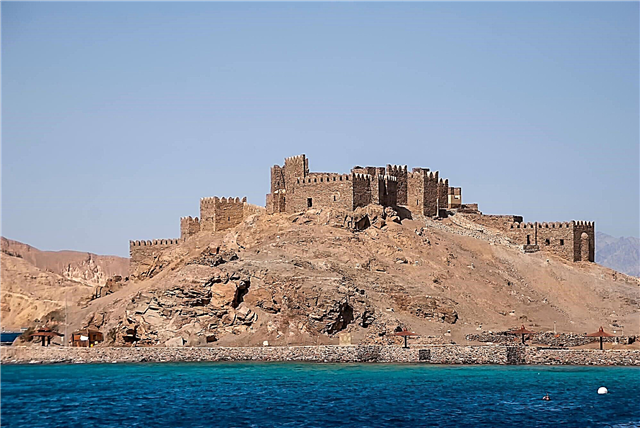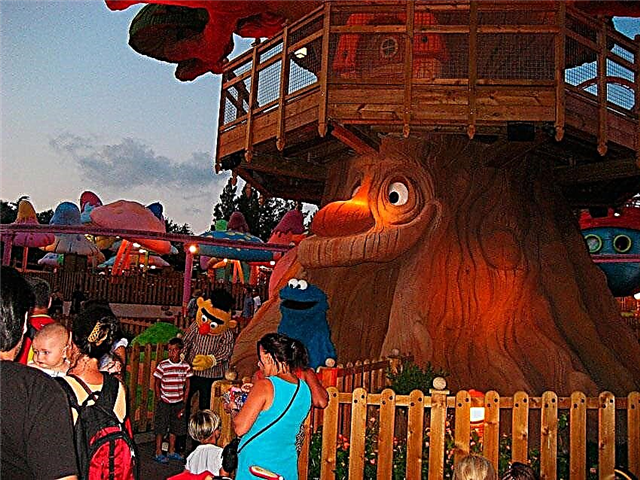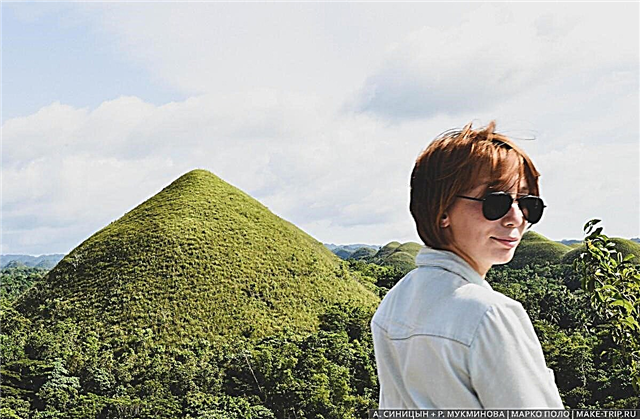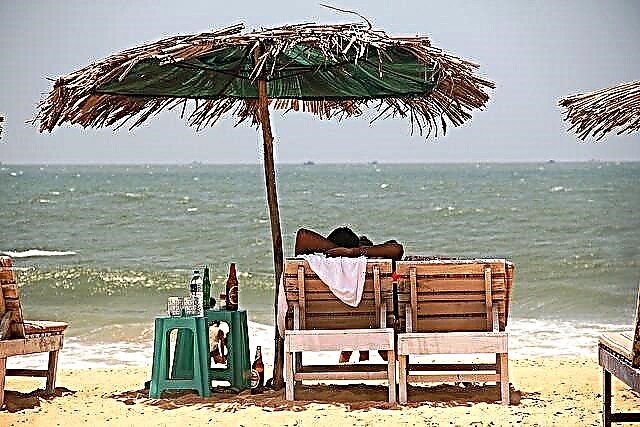Magnificent St. Petersburg is the front facade of our country. It seems that wherever you go in this city, you can find everywhere a luxurious royal palace or an elegant mansion of aristocrats. Most of the architectural structures classified today as historical and cultural monuments were built in the 18th-19th centuries. Among them are magnificent imperial residences and private estates of influential families, now turned into museums or given to state and scientific institutions.
To thoroughly inspect all the St. Petersburg palaces, probably not even a few months will be enough. Indeed, in addition to the external decoration, parks created by talented craftsmen, there is also an internal one, consisting of tens and hundreds of halls and galleries filled with unique works of art, antique furniture and luxury goods.
The most interesting and beautiful palaces of St. Petersburg
List, photos with titles and a short description!
Winter Palace
The official residence of Russian emperors from the middle of the 18th century until the February Revolution. It was started by B.F.Rastrelli in the Baroque style. In total, the complex has more than 1000 rooms, hundreds of galleries and staircases, dozens of ceremonial halls. Together with the Palace Square, it forms a single architectural ensemble. Winter is a visiting card of St. Petersburg. The famous State Hermitage Museum is located on its territory - one of the best museums in the world with priceless collections.

Great Peterhof Palace
The palace complex in the Elizabethan Baroque style, built by B. Rastrelli on the model of the French Versailles. It is the main building of the eponymous park ensemble. The best masters of Russia and Europe worked on the interior decoration in the 18th-19th centuries. Today the visitor can admire the interiors of the Blue Reception Room, White Dining Room, Chinese Cabinets, Dance and Chesme Halls. The facade of the building is 300 meters long, in front of it there is a cascade of fountains and a canal. The landscape park around the palace is a grandiose example of garden design.

Great Catherine Palace
Summer residence of Empresses Catherine I, Elizabeth and Catherine II, located in the city of Pushkin (formerly Tsarskoe Selo). The construction of the complex began in 1717; throughout the century it was rebuilt, more and more closer to the late Baroque style. One of the most famous halls of the Catherine Palace is the Amber Room, restored in 2003. The original decoration was lost during the Second World War. Also, as part of the excursion, tourists visit the ceremonial halls and walk in the picturesque Alexander Park.

Mikhailovsky Palace
The complex is located on the Arts Square in the center of the northern capital. It was built in the 19th century in the high classicism style according to the project of K. Rossi. Since 1895, the Russian Museum has been located on its territory. The institution houses the most complete collection of Russian art, including icons of the XII century, works of eminent painters of the XVIII-XIX centuries, works of Soviet masters. In total, there are about half a million exhibits.

Big Menshikov Palace
The palace is the central building of the "Oranienbaum" ensemble in the city of Lomonosov. It was erected at the beginning of the 18th century by order of A. D. Menshikov in the style of the Peter the Great Baroque. A garden with sculptures and fountains is laid out around the building; a canal connecting the palace territory with the Gulf of Finland has survived to this day. Today, tourists can view the original interiors of the 18th-19th centuries, since the Menshikov Palace, unlike others, was not damaged during the Second World War.

Tauride Palace
The capital residence of Prince G. A. Potemkin-Tavrichesky. The building was erected in 1789 in the style of classicism according to the project of I. Ye. Starov. In 1906-1910, the State Duma met on its territory, today it is used as the headquarters of the CIS Interparliamentary Assembly. The appearance of the Tavricheskiy Palace is rather modest in comparison with the magnificent interior decoration. The Museum of the History of Parliamentarism, a concert hall and various exhibitions operate on its territory.

Vorontsov Palace
The building is located opposite the Gostiny Dvor. Quite rightly, it is considered one of the most beautiful architectural monuments of St. Petersburg. Its facade is made in the Baroque style and is decorated with many decorative details. In total, there are more than 50 rooms and ceremonial halls in the palace; the garden, which occupies the territory up to the Fontanka, also deserves attention. Since the 1950s, the complex has been owned by the Suvorov Military School.

Constantine Palace
The construction of the palace was conceived by Peter I, who wanted to create the Russian Versailles. The work was continued under Elizabeth I and finished only closer to the middle of the 19th century. During the Second World War, the ensemble was almost completely destroyed, but restored already in the 1950s. As a result of a large-scale reconstruction of the 2000s, the facade and interiors were recreated, new bridges and fountains were built in the park. Also, a hotel "Baltic Star" was erected on the territory of the complex.

Elagin Palace
The palace was built at the beginning of the 19th century for Maria Feodorovna, the mother of Alexander I. It is an elegant manor house in the classical style, surrounded by a green park. Inside you can see the Empire style interiors, luxurious furniture and exhibitions of arts and crafts: porcelain, embroidery, glass, wood carvings. Costume balls are also held in the Elagin Palace.

Stroganov Palace
Magnificent 18th century Baroque building erected for the Stroganov family. B. Rastrelli took part in the development of the project, although he never built private residences, only royal palaces. The building currently belongs to the Russian Museum. Visitors can see the updated interiors, the decoration of the chambers and the magnificent decoration of the state rooms.

Pavlovsk Palace
The palace and park complex was built in the era of the highest flowering of Russian classicism in the late 18th - early 19th centuries. The main building, the Pavlovsk Palace, was used as the summer residence of Paul I. Around it is a landscape park divided into several sectors; in front of the front facade there is a square with a statue of the emperor installed in the center.

Mariinsky Palace
The building is part of the ensemble of St. Isaac's Square. It was built in 1844 in a neoclassical style. Almost immediately after the completion of the work, free access was opened to the palace, which was a rather unusual step for that time. Here lived the daughter of Nicholas I, Maria, after her death the State Council moved here, later - the Provisional Government. Today the city Legislative Assembly is sitting in the palace.

Mikhailovsky castle
Paul I worked on the project of his future residence, he created more than 10 sketches of the palace. The complex was built in 1801, and a little over a month later, the emperor, who did not have time to enjoy his new home, was killed in his bedroom. The appearance of the Mikhailovsky Castle is somewhat different from other similar structures - it clearly traces the features of European architecture. Since 1994, the complex has been a branch of the Russian Museum.

Yusupov Palace on the Moika
A luxurious private palace that belonged to the ancient and influential family of the Yusupov princes. Today it is used for diplomatic meetings, celebrations, symposia. Visitors can explore the luxurious interiors of the halls and apartments of the former owners, go on a themed tour, attend a performance at the palace theater or stroll through the park.

Anichkov Palace
The structure is located next to the Anichkov bridge. It began to be built in the middle of the 18th century by the decree of Elizabeth Petrovna with the participation of B. Rastrelli, when these places were still the outskirts of the city.In the 19th century, it served as the residence of Alexander III, who was hiding behind its walls from possible assassination attempts. Today, the territory houses the Lyceum and the St. Petersburg City Palace of Youth Creativity.

Menshikov Palace
The very first stone building in St. Petersburg, built for the close associate of Peter I - Count A. Menshikov in the 1720s. After the favorite was accused of high treason, the palace was transferred to the state and the Cadet Corps was placed in its premises. Today the building is a branch of the Hermitage. The halls contain collections of decorative and applied art, as well as a historical exposition dedicated to the Peter the Great era.

Beloselsky-Belozersky Palace
The building in the lush neo-baroque style adorns Nevsky Prospekt. The facade of the palace is decorated with figures of Atlanteans, caryatids and decorative stucco molding, the decoration of the halls in the Rococo style is striking in its luxury and pretentiousness. Since 1991, the complex has become one of the main cultural centers of St. Petersburg. Today it can be visited as part of an excursion, along the way seeing the exposition of the Museum. Sobchak, or come to a classical music concert.

Traveling palace of Peter I in Strelna
Quite a simple wooden mansion where Peter I stayed on the way to Kotlin. This house, built in the 18th century, is the oldest building in Strelna. Since 1981 it has been a part of the Peterhof Museum-Reserve. A collection is housed inside, mainly consisting of the personal belongings of the emperor. The Traveling Palace stands on a hill surrounded by a beautiful park with a natural landscape.

Palace of the Counts Sheremetev
The Fountain House is one of the family estates of the Sheremetev family, built in the first half of the 18th century in the Baroque style. Before the nationalization of 1917, five generations of this ancient family lived here. In Soviet times, the Museum of the Noble Life was organized on the territory of the palace. Since the 1990s, the premises have housed collections of musical instruments from all over the world.

Marble palace
The northern facade of the building faces the Neva; it adorns the Palace Embankment. It was built in the 18th century by A. Rinaldi. The building got its name "Marble Palace" because natural stone and various types of marble were used in the facing. Also, many decorative elements were made from this material. Since 1992, the complex has been transferred to the Russian Museum. Inside you can see the collections of foreign artists who lived in Russia in the 18th-19th centuries.

Nikolaevsky palace
The palace was built for the son of Emperor Nicholas I in the middle of the 19th century in the eclectic style that was fashionable at that time. For its era, the building was very modern: inside there was a plumbing and heating system, an elevator worked, and telegraph communication was also established. In the Soviet era, the People's University of Trade Union Workers was located on the territory of the palace; today, the governing body of the city Federation of Trade Unions sits there.

Summer Palace of Peter I
The building is located on the territory of the Summer Garden. It was erected in 1714 in the style of the Peter the Great Baroque, thus, it is one of the oldest buildings in St. Petersburg. The facade of the building is decorated with bas-reliefs depicting episodes of the Great Northern War. Peter I came to this palace every summer. From the middle of the 19th century, public access was allowed to the building. At the moment it is a branch of the Russian Museum.

Razumovsky palace
Initially, on the site of the stone palace there was a wooden one, which was dismantled in 1760 due to dilapidation. The modern building was built under K. G. Razumovsky, President of the Academy of Sciences. Educational institutions were located in the palace since the end of the 18th century: first - an orphanage, later - the Women's Pedagogical Institute, now the complex of buildings belongs to the Herzen Russian State Pedagogical University.

Novo-Mikhailovsky Palace
A majestic building in the early eclectic style is located on the Palace Embankment. It was built according to the project of A. Stakenschneider. In tsarist times, it was used as a grand ducal residence, where the emperor's children lived. In Soviet times, the Institute of Oriental Studies was located in the Novo-Mikhailovsky Palace; since the 1990s, several more scientific institutions have moved here.

Naryshkin-Shuvalov Palace
A two-story mansion on the Fontanka embankment, in which the Naryshkin family lived since the 19th century. At that time, the most magnificent balls in St. Petersburg were held here, where all the aristocracy gathered and Alexander I was a frequent guest. After the Revolution, a museum of everyday life worked in the palace, but then all collections were moved to the Hermitage. Today, the Center for International Cooperation is located on its territory.

Alexander Palace in Pushkin
The palace was erected under Catherine II, in the future it became one of the royal residences. It was originally built not for lavish receptions, but for a quiet life, unlike its brilliant neighbor, the Catherine Palace. Therefore, the architectural style was chosen more simple and laconic. Since 1918, it housed a museum, a rest house, a shelter and even the headquarters of the German command during the occupation. Today, historical collections have returned under its roof.

Monplaisir Palace
On the shore of the Gulf of Finland in Peterhof, in the middle of a magnificent landscape park, there is the Monplaisir Palace - an outstanding example of Baroque architecture. In addition to the priceless collections of Chinese porcelain, Dutch faience and Russian glass that adorn the palace halls, here you can see paintings by artists of the 18th-19th centuries, acquired by Peter I.

Palace of Grand Duke Vladimir Alexandrovich
Mansion in the Art Nouveau style on the Palace Embankment, which belonged to the Grand Duke Vladimir Alexandrovich. Towards the end of the 19th century, magnificent Baroque palaces were no longer built, preferring more modest decoration and size - the building is more reminiscent of a medieval Italian palazzo. Today, the House of Scientists is located under its roof, where scientific sections work, lectures, concerts and exhibitions are held.

Yusupov Palace on Sadovaya Street
The manor house of the 18th century, which at that time was considered one of the most luxurious in the city. Initially, the building was erected in the Baroque style, later redesigned in a more strict classical manner. Around the palace there is a park with walking alleys and a pond, which is a pleasure to walk along at any time of the year. Today the building belongs to the St. Petersburg University of Railways.

Kamennoostrovsky Palace
The elegant palace in the classical style, framed by a row of columns and decorated with Greek porticoes, was built in the era of Catherine II. The Empress used it as her country residence. As it should be, a landscape park is laid out around the building, which delights visitors with silence and beauty in summer. Now the palace houses the Academy of Talents - an educational institution for schoolchildren.












